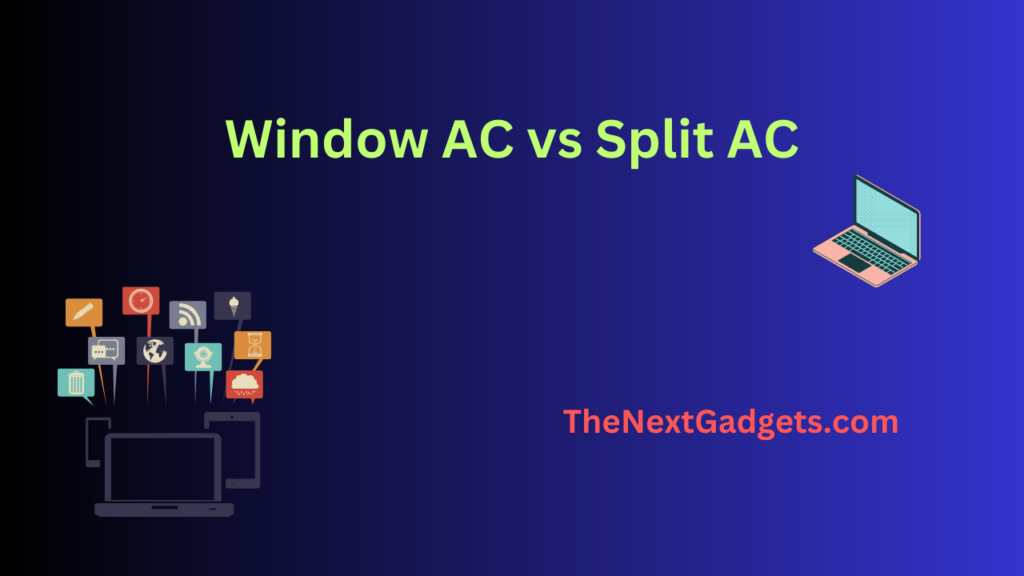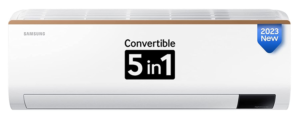Window AC vs Split AC: Which is the Best Option for Your Cooling Needs?
When it comes to buying an air conditioner (AC), one of the most common dilemmas that consumers face is whether to go for a window AC or a split AC. Both types of ACs have their own advantages and disadvantages, and the choice ultimately depends on your personal preferences and requirements. In this article, we will compare window ACs and split ACs in detail, so that you can make an informed decision when buying an AC for your home.

Table of Contents
Installation Process
One of the major differences between window ACs and split ACs is the installation process. Window ACs are designed to be installed on a window frame or a hole in the wall, while split ACs require two separate units – an indoor unit and an outdoor unit. The installation process for window ACs is relatively simple and can be done by a single person. On the other hand, split AC installation requires a professional technician and is a more time-consuming and complicated process.
Cooling Capacity
Another important factor to consider when choosing between window ACs and split ACs is the cooling capacity. The cooling capacity of an AC is measured in tonnes and refers to the amount of heat that the AC can remove from a room in an hour. Window ACs are available in capacities ranging from 0.75 to 2 tonnes, while split ACs are available in capacities ranging from 1 to 2.5 tonnes. This means that split ACs are more powerful and can cool larger rooms more efficiently than window ACs.
Design
Window ACs are designed to be installed on a window frame or a hole in the wall, and are generally more compact than split ACs. Split ACs, on the other hand, consist of two separate units – an indoor unit and an outdoor unit – and are more visually appealing than window ACs. Split ACs are available in a wide range of designs and styles, and can be installed on walls, ceilings or floors, depending on your preference.
Energy Efficiency
When it comes to energy efficiency, split ACs are generally more efficient than window ACs. This is because split ACs are designed to cool specific areas of a room, whereas window ACs cool the entire room. Split ACs also use advanced technology such as inverter technology, which helps in reducing energy consumption and lowering electricity bills.
Noise
Another factor to consider when choosing between window ACs and split ACs is the noise level. Window ACs tend to be noisier than split ACs, as the compressor and other components are located inside the same unit. Split ACs, on the other hand, have a quieter operation, as the compressor is located outside the room and the indoor unit only contains the fan and the evaporator.
Maintenance
Maintenance is an important aspect to consider when buying an AC, as it can impact the efficiency and longevity of the unit. Window ACs require less maintenance than split ACs, as they have fewer components and are easier to clean. Split ACs, on the other hand, require regular maintenance, including cleaning the indoor and outdoor units, checking the refrigerant levels, and replacing the air filters.
Cost
Finally, cost is an important factor to consider when choosing between window ACs and split ACs. Window ACs are generally more affordable than split ACs, as they have fewer components and are easier to install. Split ACs are more expensive, as they require two separate units and the installation process is more complicated.
Window AC vs Split AC Power Consumption
When it comes to power consumption, split ACs are generally more energy-efficient than window ACs. This is because split ACs have a two-unit system, with the compressor unit located outside and the indoor unit located inside the room. This means that split ACs don’t have to work as hard to cool the room, resulting in lower power consumption.
On the other hand, window ACs have a single unit system, with the compressor and evaporator located in the same unit. This can result in higher power consumption as the unit has to work harder to cool the room.
The exact power consumption of an AC unit will depend on several factors, including the size of the unit, the cooling capacity, and the energy efficiency rating. It’s important to choose an AC unit with the right size and cooling capacity for your room to ensure optimal energy efficiency.
In summary, split ACs tend to be more energy-efficient than window ACs, but the exact power consumption will depend on several factors. It’s important to choose the right size and cooling capacity for your room and to look for units with high energy efficiency ratings to minimize power consumption.
Also Read BEST 1.5 Ton 5 Star Split AC in India
Comparison in tabular form
When it comes to choosing between a window AC and a split AC, there are several factors to consider. To help make your decision easier, we’ve created a table comparing the two types of air conditioners based on their features, advantages, and disadvantages.
| Feature | Window AC | Split AC |
|---|---|---|
| Installation | Easy to install as a single unit | Requires professional installation and two separate units |
| Size | Typically smaller and more compact | Requires more space for the indoor and outdoor units |
| Efficiency | Can cool a single room effectively | Can cool multiple rooms or a larger space effectively |
| Noise level | Tends to be louder due to the compressor being in the unit | Tends to be quieter since the compressor is outside |
| Maintenance | Easy to access and maintain the filter and other components | More difficult to access and maintain the outdoor unit |
| Price | Typically less expensive than split AC units | More expensive than window AC units |
| Energy savings | May not be as energy-efficient as split AC units | More energy-efficient and can save money in the long ru |
Conclusion
In conclusion, both window ACs and split ACs have their own advantages and disadvantages, and the choice ultimately depends on your personal preferences and requirements. If you have a small room and are on a tight budget, a window AC may be the best option for you. However, if you have a larger room and want a more efficient and visually appealing


